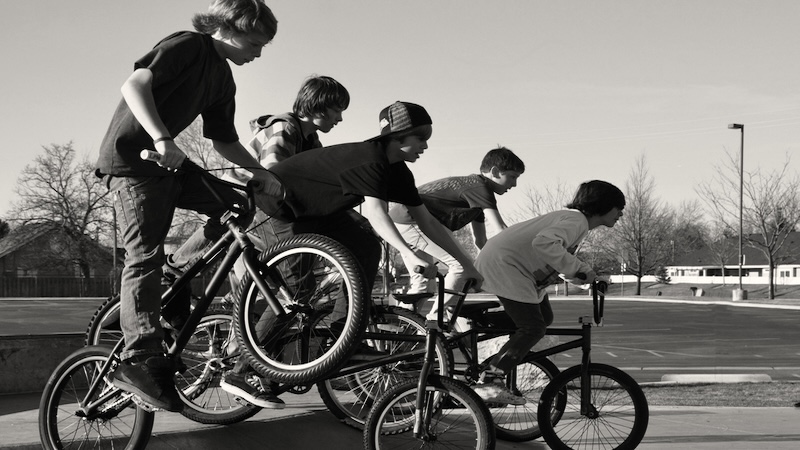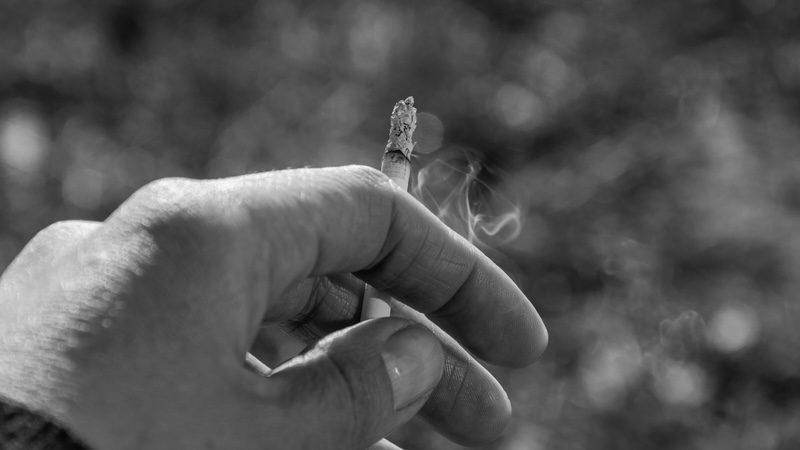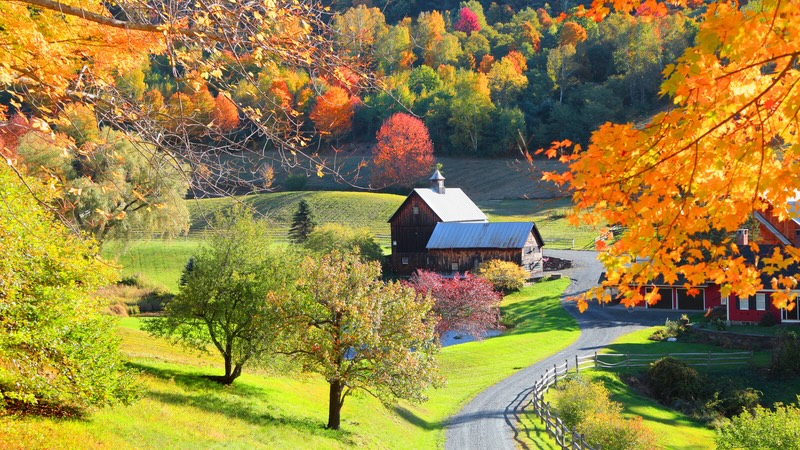Lessons from 13,000 Feet
Reaching the peak of the Breithorn was the goal
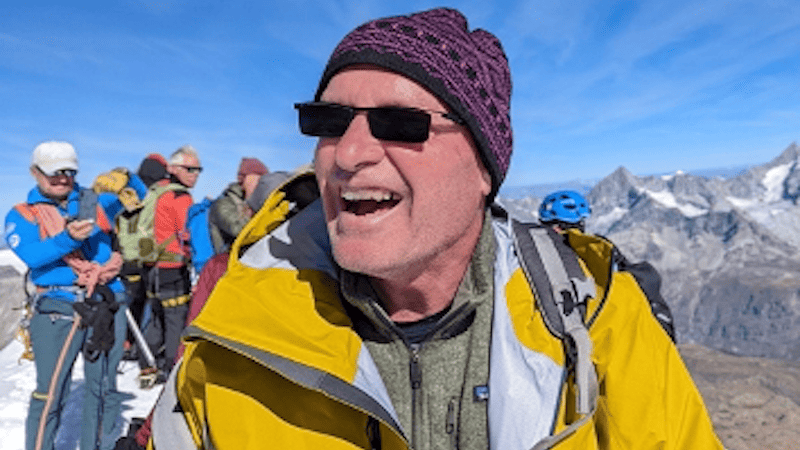
“Always keep moving on the mountain. Each step is a small rest. Slow and steady. We do not stop until we reach the summit,” the guide instructed. Jay Ahlbeck took home such lessons from Breithorn after his trip to Zermatt, Switzerland.
I am not an alpinist or a mountain climber, but last summer, I traveled to Zermatt, Switzerland, to climb the 4,164-meter Breithorn. Reaching the peak of the Breithorn was the goal; however, the magic I discovered was not at the summit. It was in the many steps along the way.
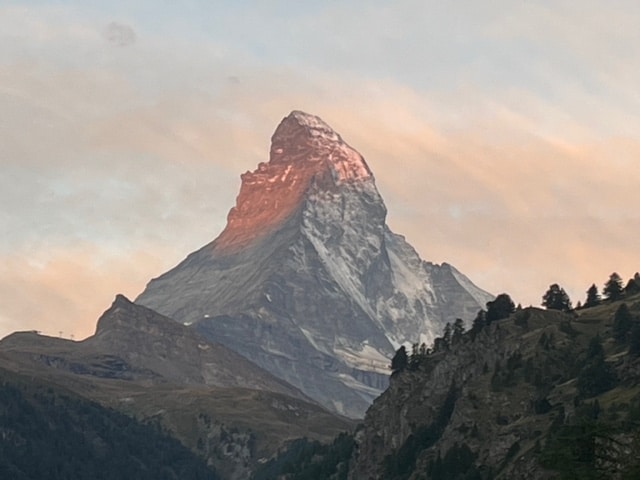 Upon arrival in Zermatt, you are almost hypnotized by the natural beauty that is everywhere. The iconic Matterhorn towers above the village like a living presence gazing down while visitors gaze up again and again. The Matterhorn is never the same twice. Its color and hues constantly change with the sun and shadows. Clouds play peek-a-boo against brilliant blue skies, completely cover, give glimpses, and then suddenly reveal the vibrant gray faces of the mountain.
Upon arrival in Zermatt, you are almost hypnotized by the natural beauty that is everywhere. The iconic Matterhorn towers above the village like a living presence gazing down while visitors gaze up again and again. The Matterhorn is never the same twice. Its color and hues constantly change with the sun and shadows. Clouds play peek-a-boo against brilliant blue skies, completely cover, give glimpses, and then suddenly reveal the vibrant gray faces of the mountain.
Juxtaposed against this beauty, situated in the center of the village, is the Mountaineers’ Cemetery, where over 500 souls lay at rest, having met their end climbing in the mountains surrounding Zermatt. Some graves are only a few weeks old, while others date back to the fateful first summit of the Matterhorn in 1865. Still others lie empty and waiting.
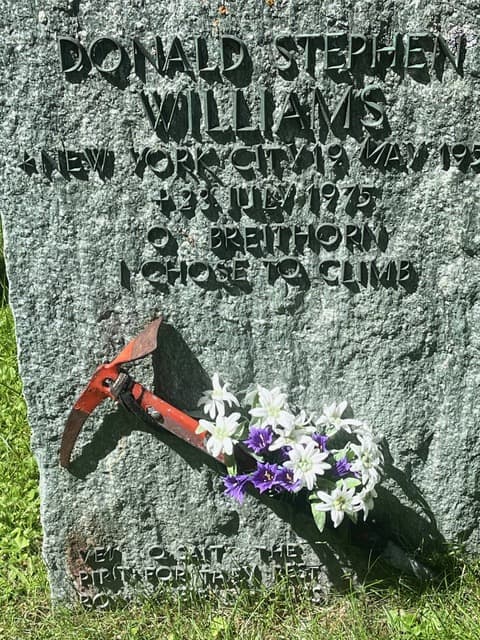 The epitaph on the grave of Donald Stephen Williams, a 17-year-old New Yorker who died in 1975 climbing the Breithorn, reads, “I Chose to Climb.” For many, the mountains are an irresistible siren song whose calling cannot be denied. Swiss life is inextricable from the mountains. A mountaineers’ cemetery at the center of the village is not so much in memory of the dead as it is in honor of them. Death on a mountain is not expected or desired, but it is understood.
The epitaph on the grave of Donald Stephen Williams, a 17-year-old New Yorker who died in 1975 climbing the Breithorn, reads, “I Chose to Climb.” For many, the mountains are an irresistible siren song whose calling cannot be denied. Swiss life is inextricable from the mountains. A mountaineers’ cemetery at the center of the village is not so much in memory of the dead as it is in honor of them. Death on a mountain is not expected or desired, but it is understood.
Long before setting foot in Zermatt, we carefully researched the Breithorn. The Breithorn is considered one of the easiest 4,000+ meter peaks, but “easiest” does not mean easy, and climbers die on the Breithorn almost every year. The Breithorn is deceptive and lures less-skilled climbers who climb without guidance. Misjudging the weather, the route, crevasses, or making a single wrong step can prove fatal. Knowing this, my first call when planning this trip was to Klaus.
Klaus is a local legend and a true alpinist. He summited Mount Everest in 2017 and regularly guides climbers up the 4,000+ meter (nearly 14,000 feet) peaks around Zermatt. Klaus showed us what to do, how to do it, and even how to think. He fixed problems and used psychology when needed. Klaus led us up the mountain like he was on a walk in the park, but we were not on a walk in the park.
The climb and the lessons from Breithorn
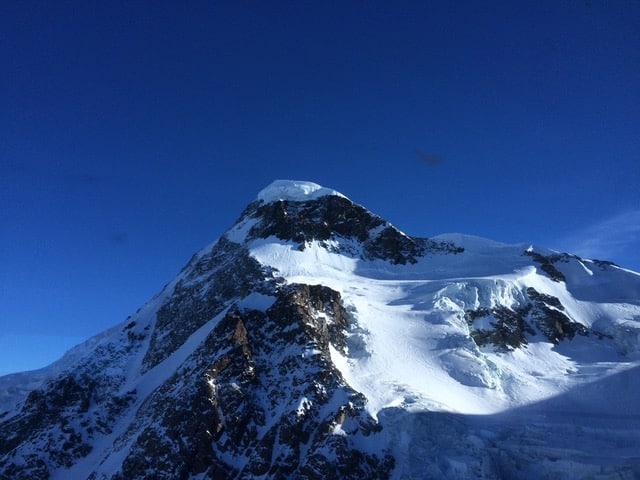
We were on the side of a mountain at an elevation above 13,000 feet and in thin air. All of us, except Klaus, experienced the effects of low oxygen. Some felt light-headedness and varying degrees of panic from the enormity of the visuals above and below us. The view was magnificent, but looking up could give you vertigo, and looking down could trigger the fear of falling.
Much later, I realized Klaus knew all of this, and he was managing the climb from the moment he met us. On our way to the mountain base, we asked Klaus about recent accidents. Klaus said, “The most common place to die is in bed while sleeping.” There is no use for thoughts of accidents while climbing a mountain. In fact, there is no use for any thought that is not focused on the task at hand.
The day we climbed was perfect, with bright sunlight and mild winds. Five of us roped together, walked in a straight line toward the mountain’s base, and watched distant climbers winding up the side of the mountain like ants on an ant hill. As we got closer, what looked so small from the village, and even from the expanse leading up to it, now looked enormous and steep. All of a sudden, what appeared easy from a distance looked daunting.
Adventures on the Gorge in West Virginia
A trait you quickly notice about Klaus is that he is devoid of drama. Throughout the climb, and I suspect through much worse, Klaus is calm. Arriving at the base of the Breithorn, Klaus simply told us, “We stop here to put on our crampons.”
With our crampons fastened, he explained, “Each of you is responsible for the one in front of you. You must keep the rope away from the feet. No one steps on the rope; not once, not ever. We climb as a team. Everyone summits, or no one summits.” With that, we began the long steep climb up the ice-covered face of the Breithorn. “Slow and steady,” said Klaus. “We will not stop again until we reach the summit.”
At one point, crossing a very tight passage barely a foot wide, two climbers not part of our team left the track and took a more direct and treacherous course straight up the side of the mountain. Almost immediately, a very animated mountain guide with a heavy Swiss accent yelled, “Are you crazy! Get down from there before you kill us all. You don’t even have crampons on. Are you crazy? Get down right now!” The pair were not happy to be scolded but sheepishly complied. A slip by one of them could have quickly taken an entire team down the side of the mountain. Besides the mountain itself, ignorance may be the most significant danger in climbing the Breithorn.
At this point, my mind was empty. Despite the thin air, my breathing was calm and rhythmic. I heard my breath like it was the only thing to hear. Each step was a crisp, concise, satisfying crunch into the ice. I was tired but joyous. My mind was empty.
Up ahead, the summit was now in view, but a team member was overcome by exhaustion and said, “I can’t go any farther. I need to rest.” Klaus spoke to him, but he never broke stride. “Always keep moving on the mountain. Each step is a small rest. Slow and steady. We do not stop until we reach the summit.” This was not a crisis but a psychological barrier that Klaus helped a climber navigate. I suspect he has said these exact words many times to keep a team moving, to face a barrier, and step past it. Klaus just knew, and we proceeded to the summit without incident or stopping.
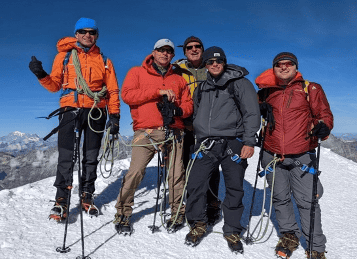
On the day we climbed, we could have climbed by ourselves, but why, with so much at stake, would we climb high into the Alps without a professional guide? Many things on a mountain cannot be controlled. A guide cannot stop an avalanche, collapsing ice, or a storm. Still, when an emergency arises, the chances of getting off the mountain alive are significantly increased with the help of an experienced guide.
Back in the village, over a celebratory beer, we were a little cocky. “Tomorrow, let’s climb to the Matterhorn’s base camp,” and so we did. The “Hut” is where climbers of the Matterhorn sleep and prepare for their climb. The “Hut” is a not-so-Spartan hotel/restaurant high in the mountains above Zermatt at the foot of the Matterhorn. But that is a story for another day.
Jay Ahlbeck lives with his wife, 80-pound labradoodle Bella, and two daughters in Plainfield, NJ, where, when he is not playing basketball or exploring the world and taking home lessons from Breithorn and elsewhere, he works as an independent wealth manager at Planning Capital Management.
